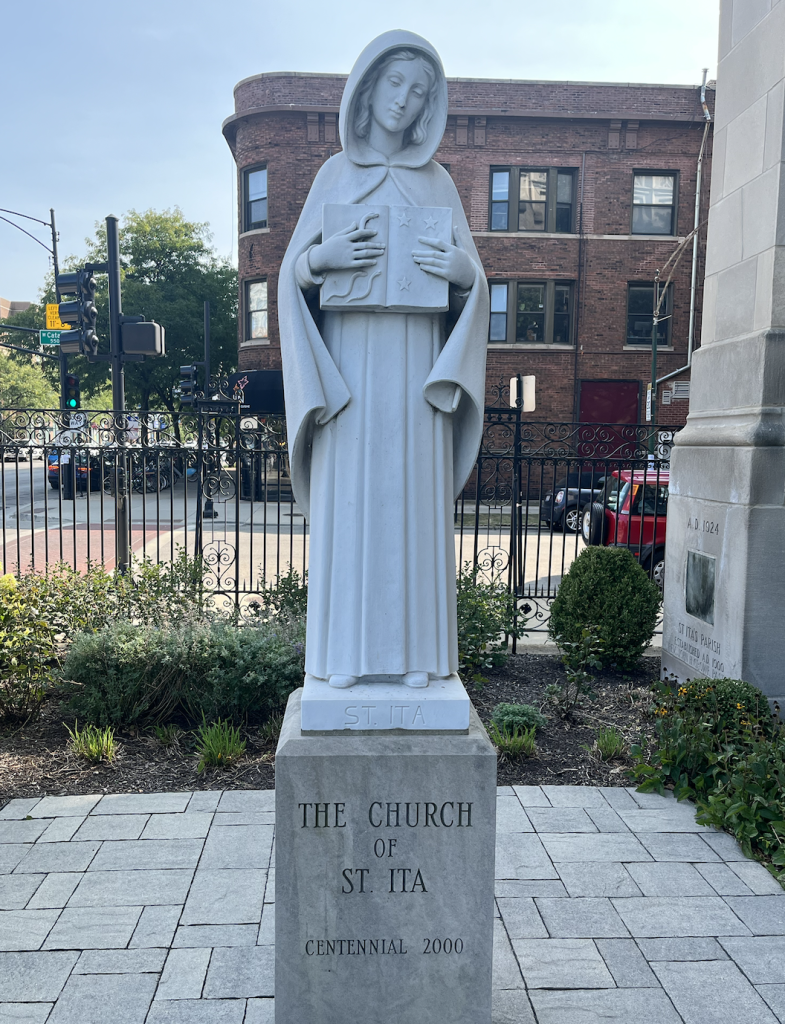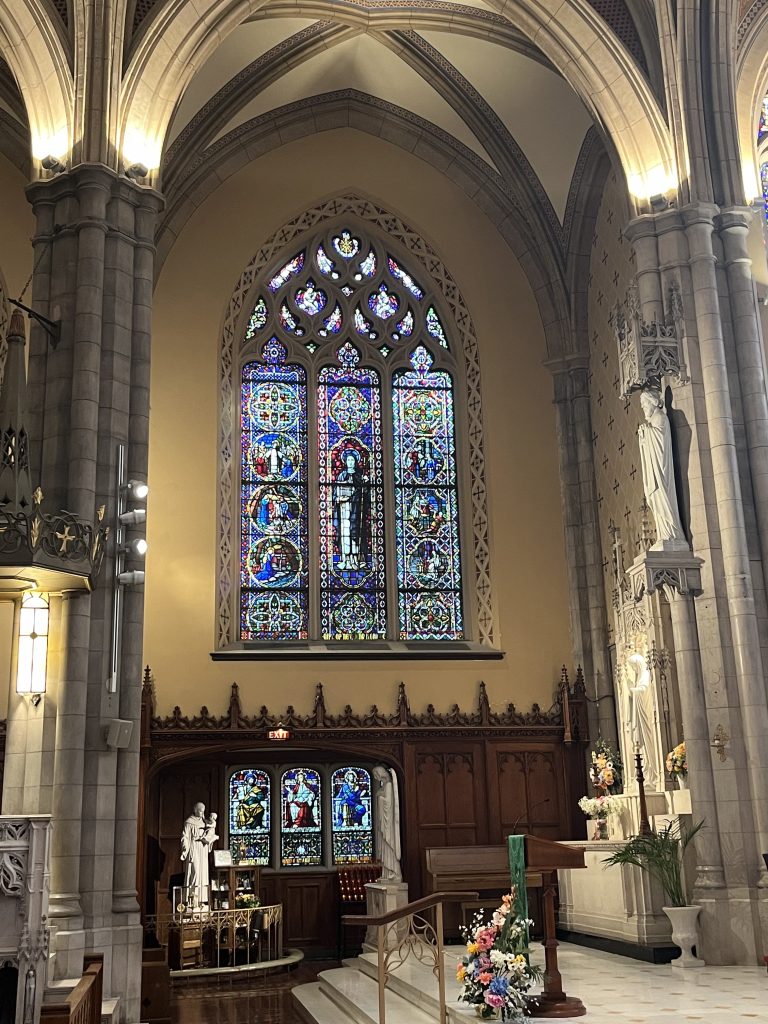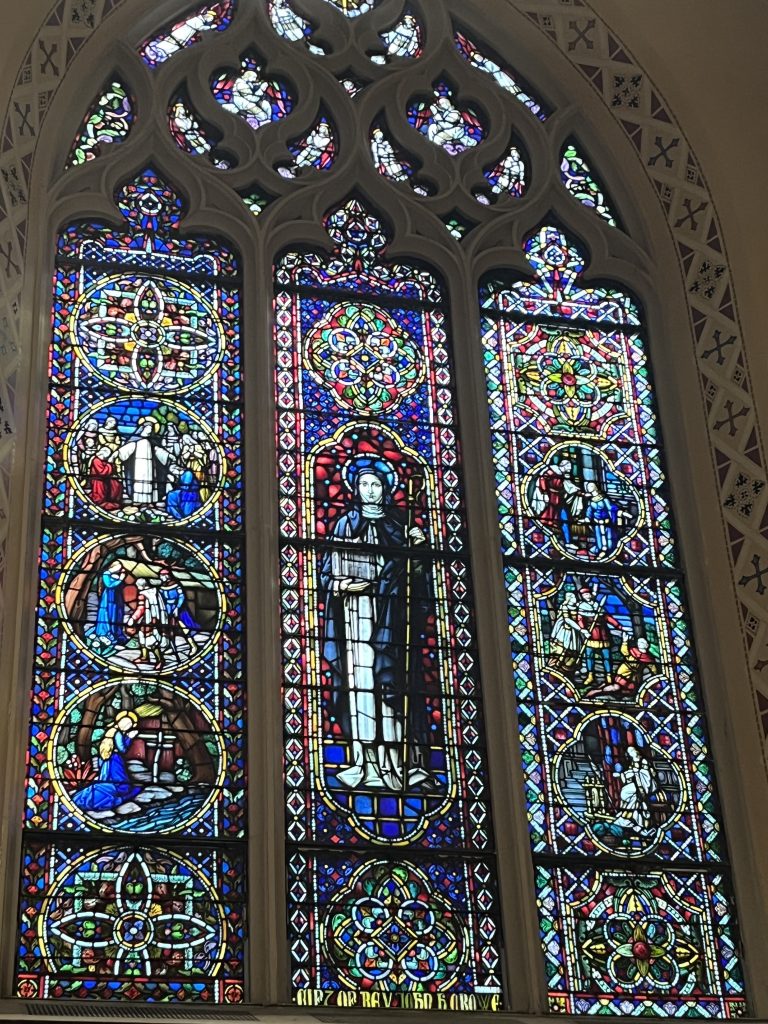Ita
6th Century Irish Nun
Ita (c. 480-570), sometimes referred to as Ida or Mida, is considered the second most venerated female saint in Ireland. Much like the story of Brigid, some mythical information about Ita has been syncretized with her life and legacy. There is historical evidence that she was of royal descent and originally named Dierdre.



Biography – Because she desired to refuse marriage and take the vow of virginity and ministry, when her father arranged a chieftain suitor, Ita prayed and fasted for three days. She reported that angels attended to her during her fast, and Ita’s father relented and allowed her to take religious vows at sixteen. Bishop Declan of Ardmore conferred her veil, and her name was changed to Ita, which means “thirst for holiness.” She moved to the county of Limerick and gathered a group of nuns who committed their lives in service to the Lord. Ita founded a school for boys who were taught, “faith in God with purity of heart, simplicity of life with religion, generosity, and love.” One of Ita’s orphaned pupils was Brendan the Voyager, who later became a well-known abbot and missionary. She was highly sought by pilgrims due to her great wisdom and gift for spiritual guidance to holiness. She would often spend days in fasting and prayer and taught others to be in continual meditation on the divine source of provision, Jesus Christ. The Celtic Church was a trailblazer in supporting the spiritual leadership of women, and because Ita was known for her gift of prophecy, both male and female contemporary saints looked to her as a spiritual director.
Hagiography – One of the more fantastical stories told of Ita is that she sent a man to battle whom she had previously prophesied would bear a famous and holy son. The man was tragically killed and beheaded, with the victors taking his head as spoil. Ita prayed for his healing, and his head was rejoined to his body! The man had a child, fulfilling the prophecy. Many saints possess hagiographies that contain stories that seem impossible to have occurred naturally. These stories are representative of the celebration and importance of the spiritual leaders to their countrymen and admirers. Years passed and stories became embellished, but there is also verified historical information about their lives and ministries that provide the proof to know they existed and lived exemplary lives of service to the Lord. In the mid nineteenth century, Pope Pius IX established St. Ita’s feast day of January 15.
Resources:
- Attwater, Donald and Catherine Rachel John. The Penguin Dictionary of Saints. 3rd edition. New York: Penguin Books, 1993.
- “St. Ita – Saints & Angels.” Catholic Online. Accessed October 18, 2024. https://www.catholic.org/saints/saint.php?saint_id=818.
- Mary, Mother of God Parish. “Medallion Windows.” Accessed October 18, 2024. https://www.motherofgodchicago.org/medallion-windows.html
- Thurston, Herbert S.J., and Donald Attwater, eds. Butler’s Lives of the Saints. Seventh Printing 1965. Vol. 1: January, February, March. 4 vols. New York, NY: P.J. Kennedy & Sons, 1963.
